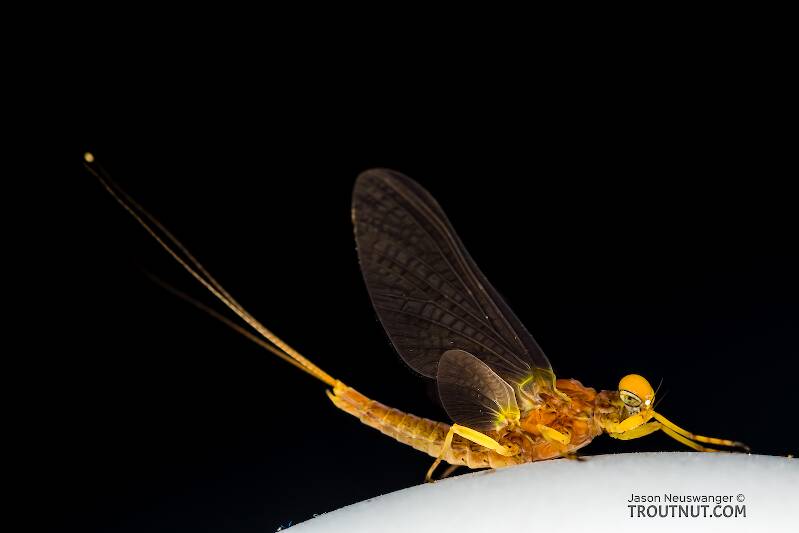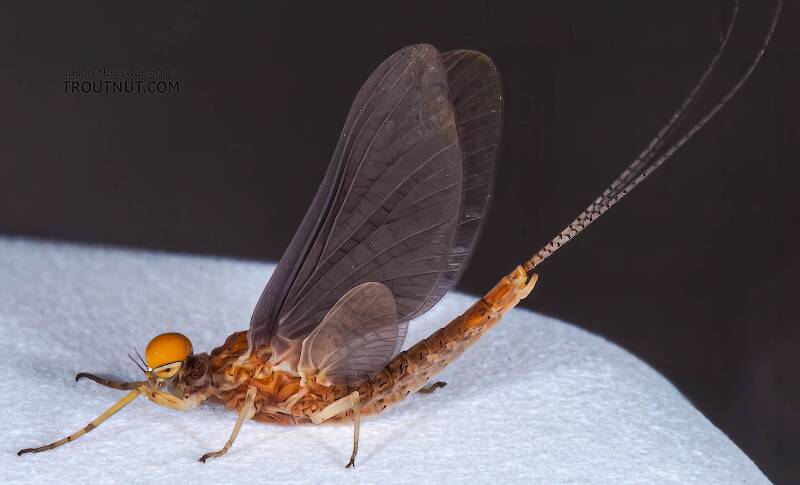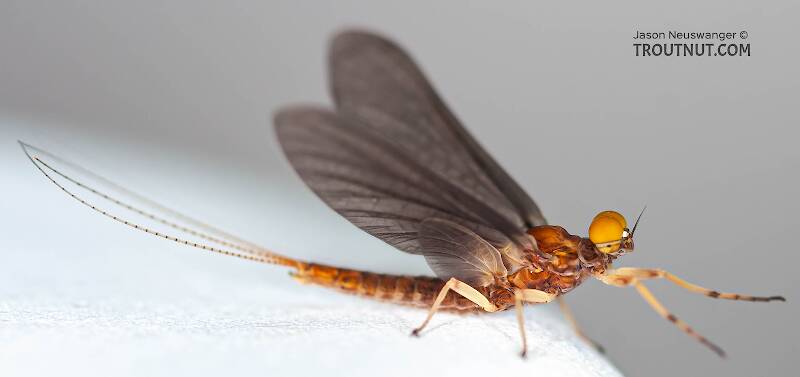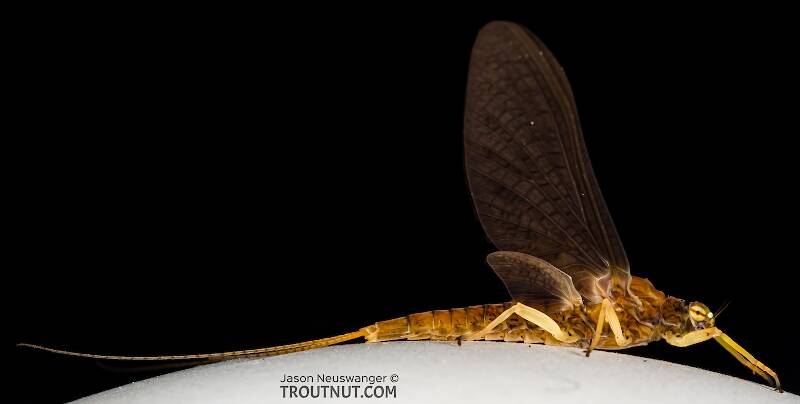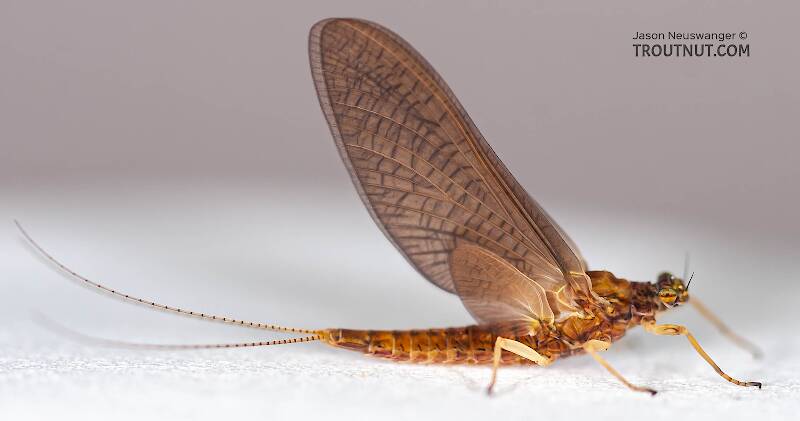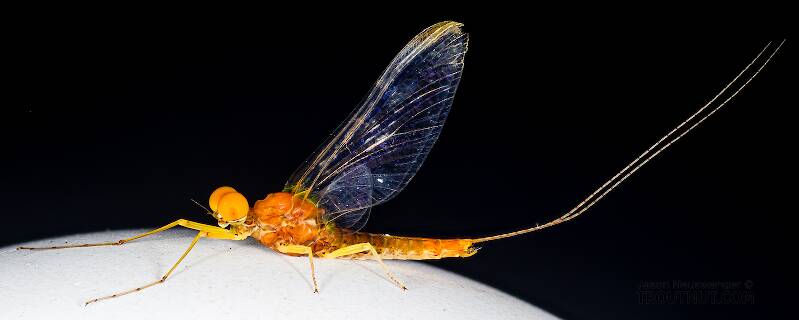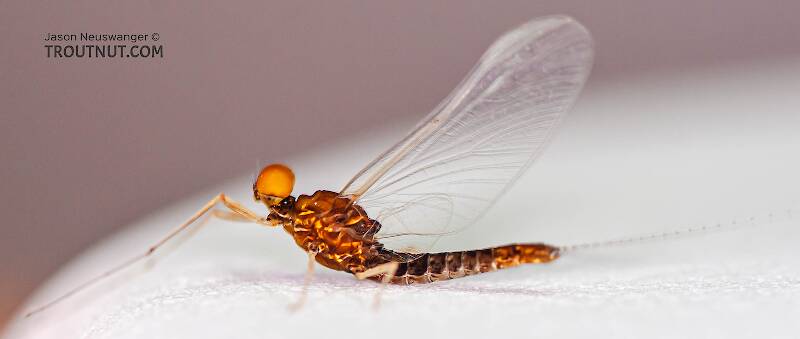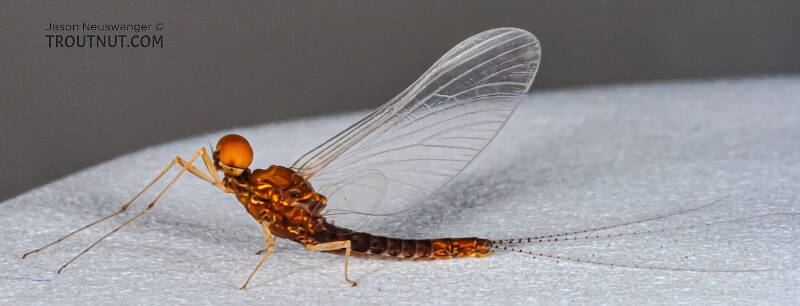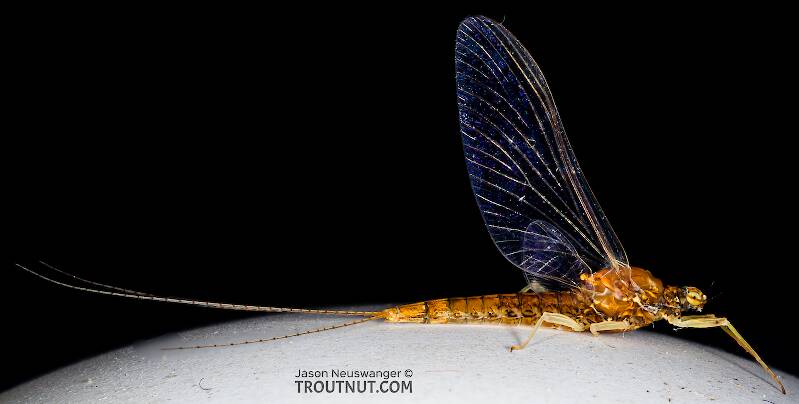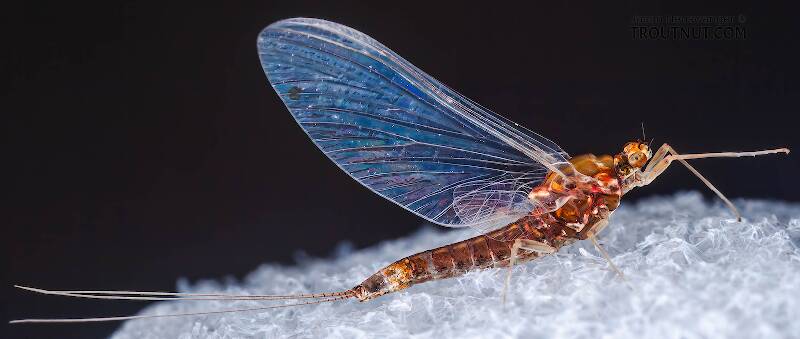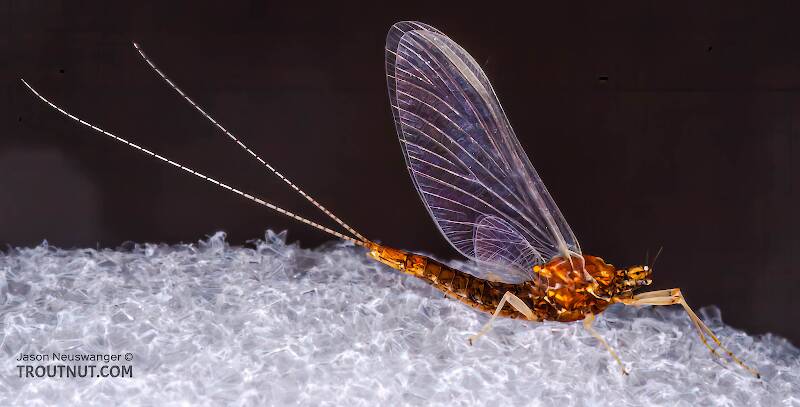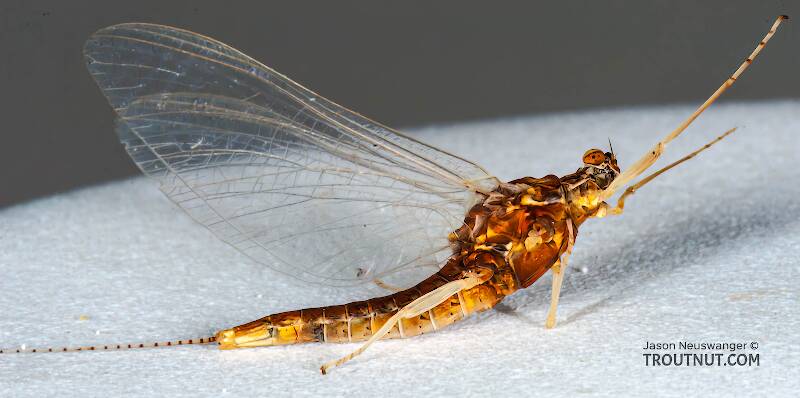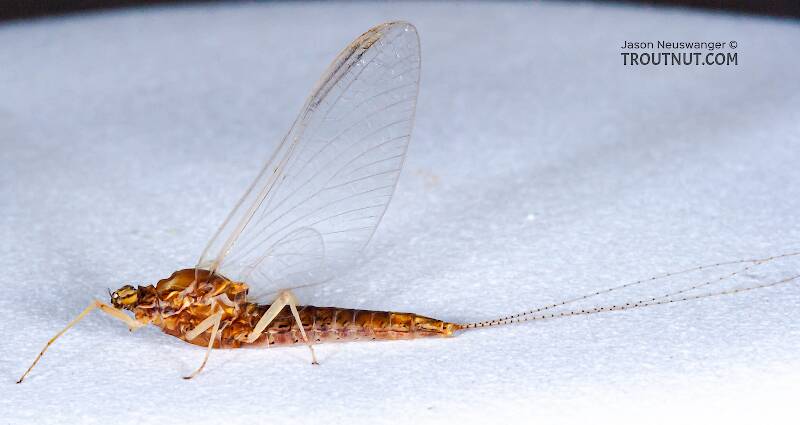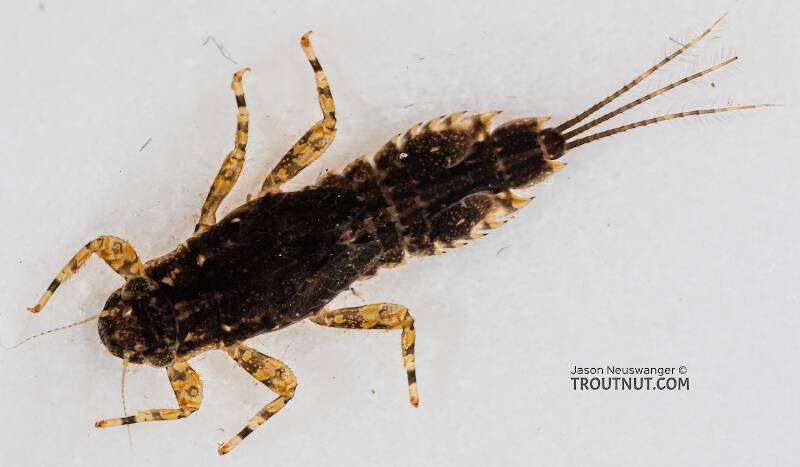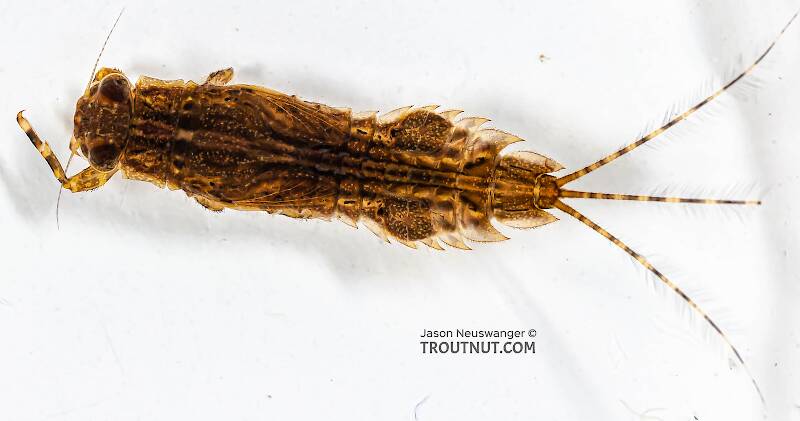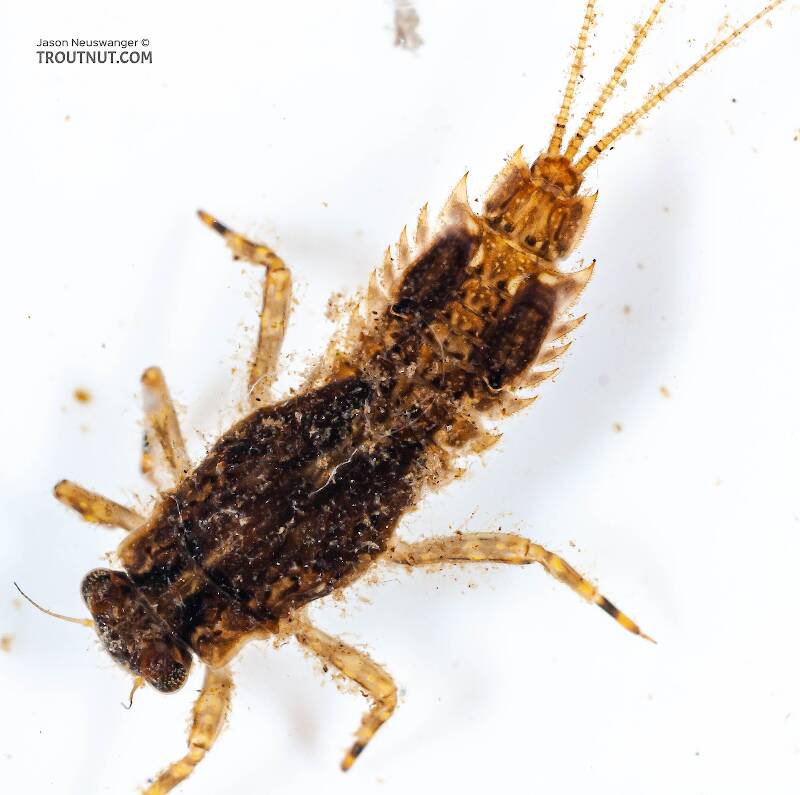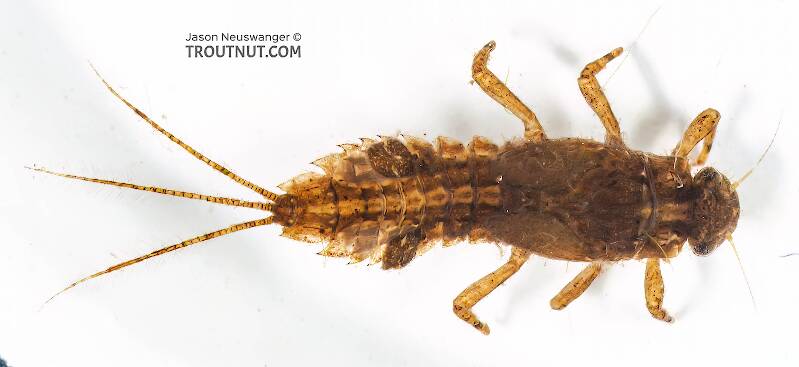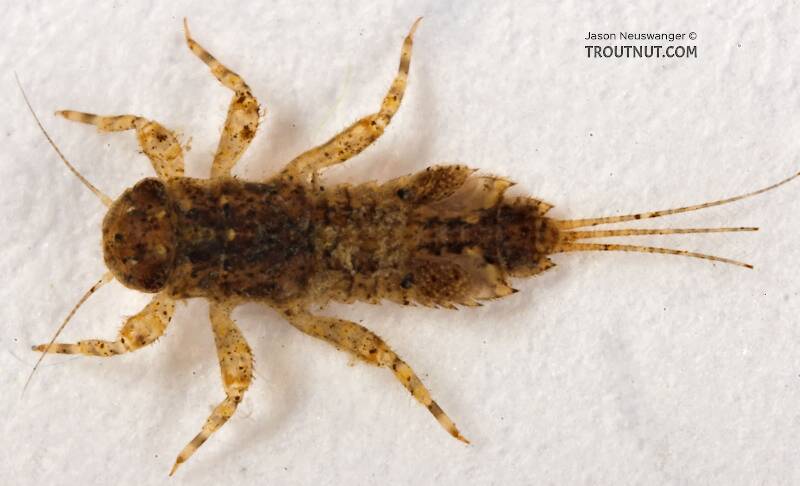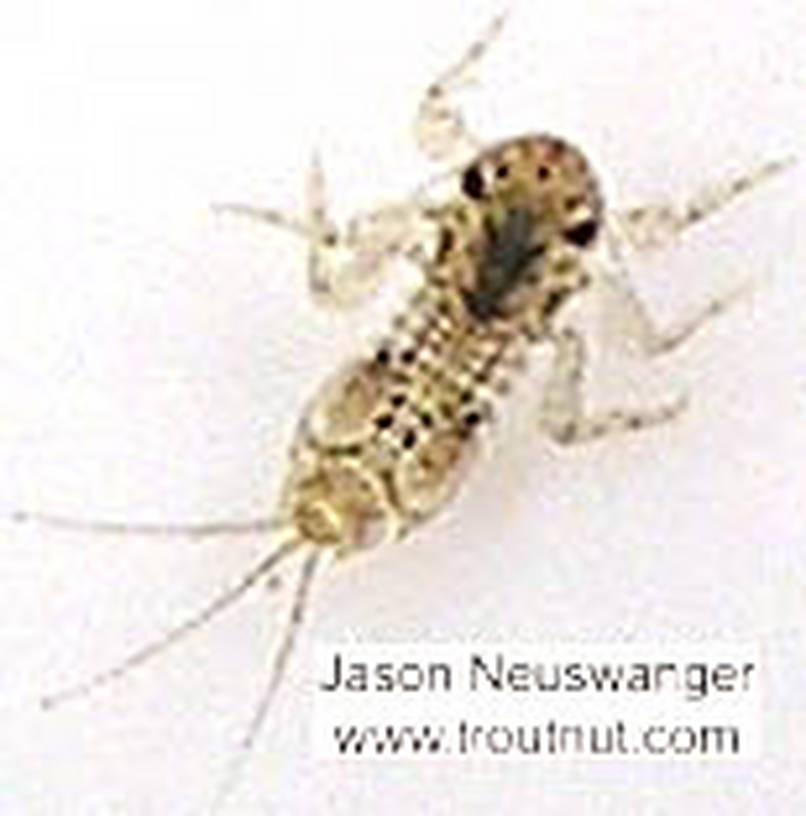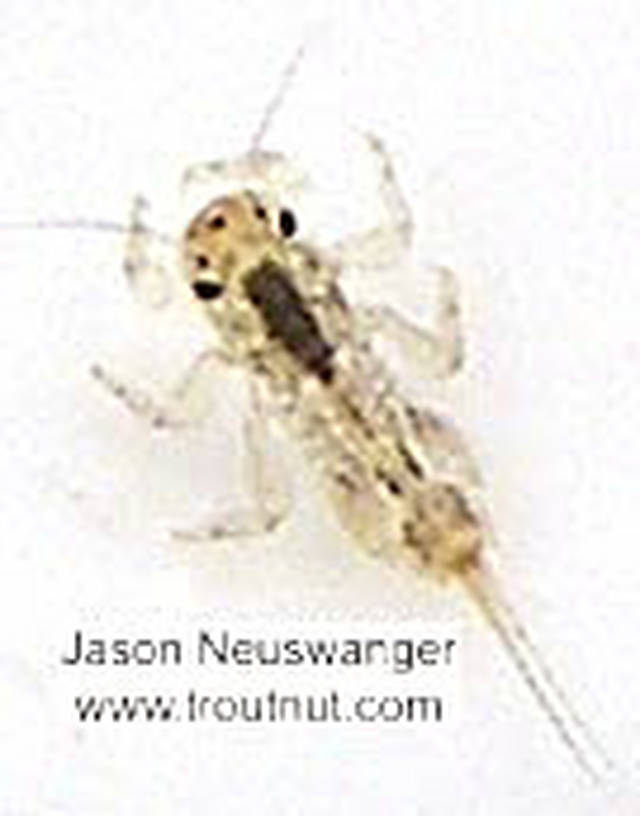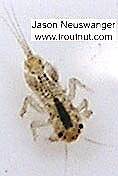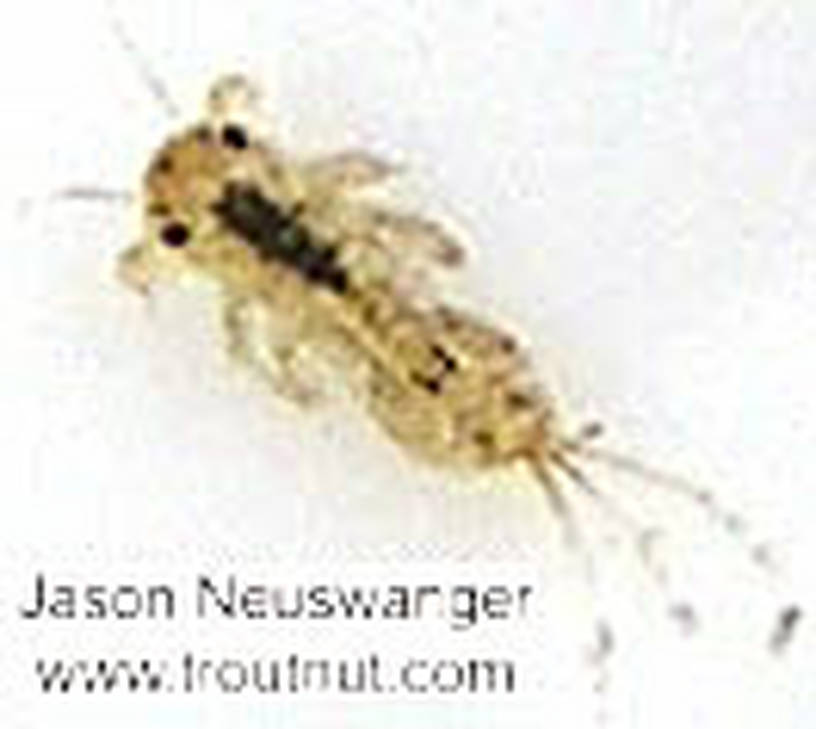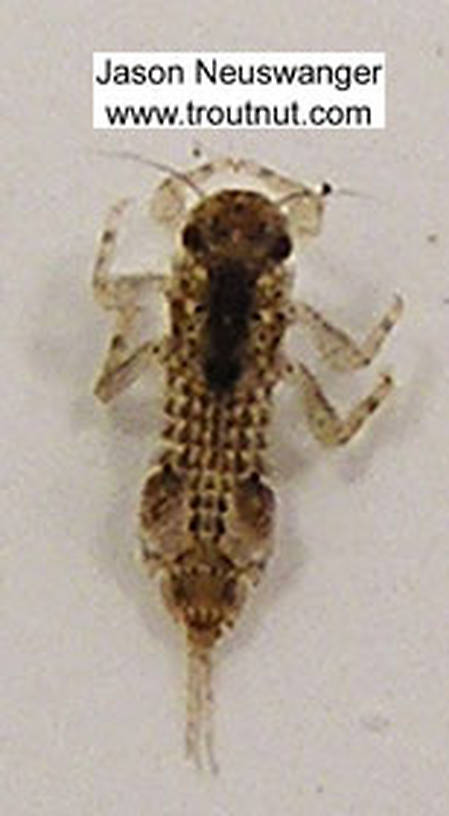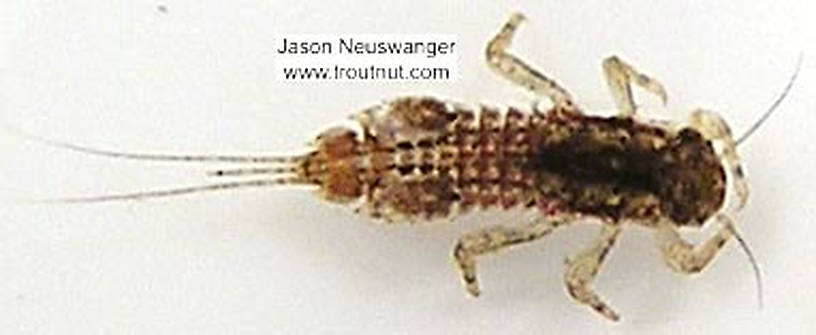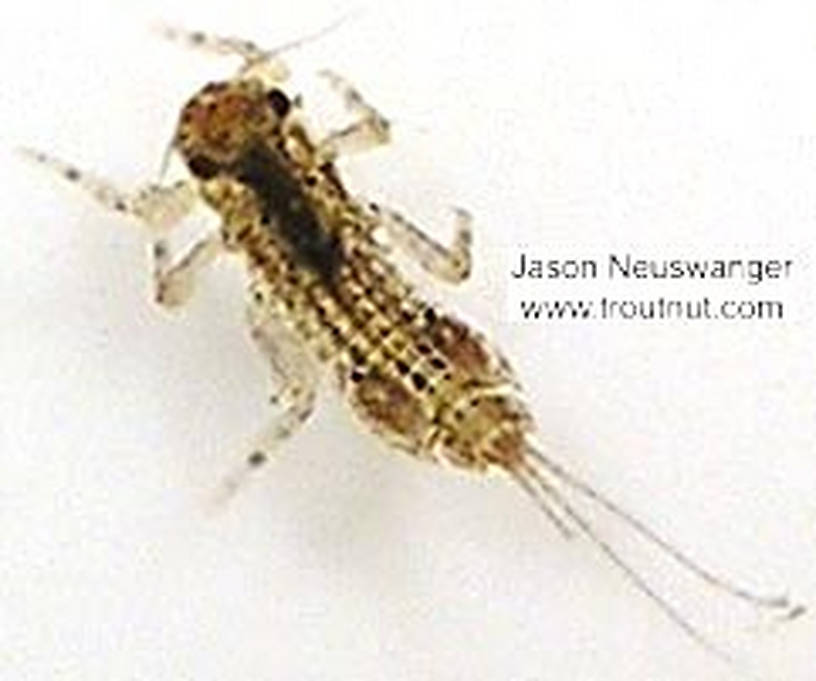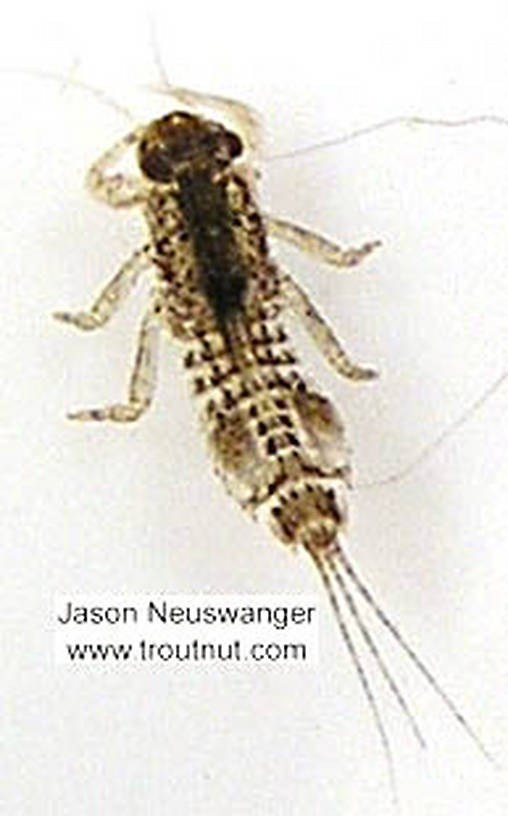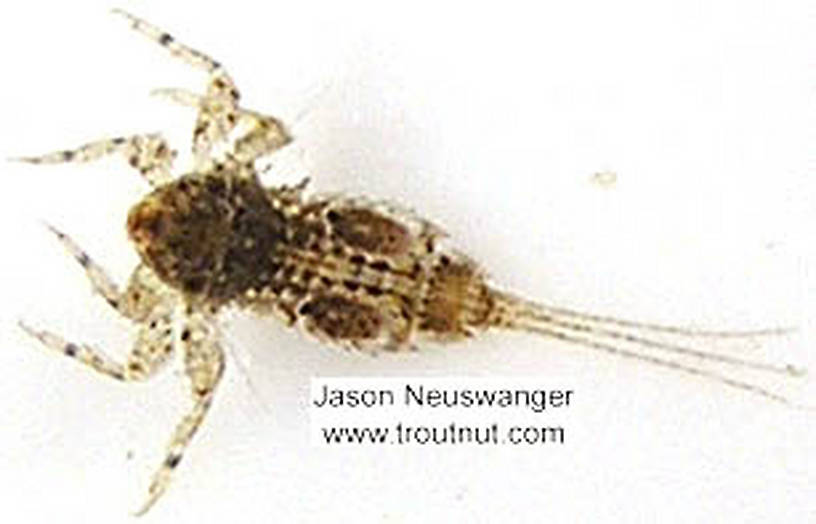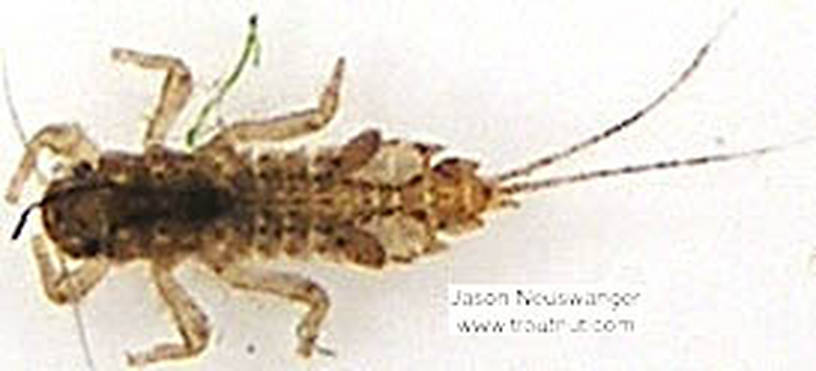
Blue-winged Olives
Baetis
Tiny Baetis mayflies are perhaps the most commonly encountered and imitated by anglers on all American trout streams due to their great abundance, widespread distribution, and trout-friendly emergence habits.
Featured on the forum

This specimen resembled several others of around the same size and perhaps the same species, which were pretty common in my February sample from the upper Yakima. Unfortunately, I misplaced the specimen before I could get it under a microscope for a definitive ID.

Troutnut is a project started in 2003 by salmonid ecologist Jason "Troutnut" Neuswanger to help anglers and
fly tyers unabashedly embrace the entomological side of the sport. Learn more about Troutnut or
support the project for an enhanced experience here.
Mayfly Genus Eurylophella (Chocolate Duns)
None of the species in this genus are recognized as significant hatches. Nevertheless, I have found their nymphs in my samples in many streams in both the East and Midwest.
Where & when
This genus is widespread throughout the East and Midwest but rarely abundant. The few species for which emergence dates are available all emerge in May and June.In 141 records from GBIF, adults of this genus have mostly been collected during June (46%), May (23%), July (20%), and April (6%).
In 44 records from GBIF, this genus has been collected at elevations ranging from 13 to 2723 ft, with an average (median) of 640 ft.
Genus Range
Nymph biology
Current speed: Slow
Specimens of the Mayfly Genus Eurylophella
3 Male Duns
2 Female Duns
4 Male Spinners
5 Female Spinners
15 Nymphs
Discussions of Eurylophella
florida mayfly nymph imitations
2 replies
Posted by Homer47 on Sep 5, 2012 in the species Eurylophella temporalis
Last reply on Sep 5, 2012 by Sayfu
Looks like an imitation would be about a #10 or #8 dark brown nymph pattern. I'm down here in north Fla and trying to match the hatch in the far north central part of the state, mostly to fool the bream. Any ideas or help would be appreciated. I found two patterns so far that seem to work- a little brown nymph with a rusty brown/orange thorax(maybe this is a good representation of the E. Temporalis), and a size 12 buzzer nymph with black body, peacock thorax and white breathing filament. The bream seemed to agree with that choice. I would like to try and copy more local insects as I figure out what they are.There are dragonflies and damselflies and mosquitoes. I could start there.
Start a Discussion of Eurylophella
References
- Caucci, Al and Nastasi, Bob. 2004. Hatches II. The Lyons Press.
- Knopp, Malcolm and Robert Cormier. 1997. Mayflies: An Angler's Study of Trout Water Ephemeroptera . The Lyons Press.
Mayfly Genus Eurylophella (Chocolate Duns)
Taxonomy
Species in Eurylophella
Eurylophella aestiva
0
0
Eurylophella bicolorChocolate Duns
0
0
Eurylophella doris
0
0
Eurylophella funeralis
0
0
Eurylophella lutulentaDirty Spiny Crawler Mayflies
0
0
Eurylophella minimella
2
25
Eurylophella prudentalis
0
0
Eurylophella temporalis
5
31
Eurylophella verisimilis
0
0
Species in Eurylophella: Eurylophella aestiva, Eurylophella bicolor, Eurylophella doris, Eurylophella funeralis, Eurylophella lutulenta, Eurylophella minimella, Eurylophella prudentalis, Eurylophella temporalis, Eurylophella verisimilis
5 species (Eurylophella bicoloroides, Eurylophella enoensis, Eurylophella lodi, Eurylophella macdunnoughi, and Eurylophella poconoensis) aren't included.


